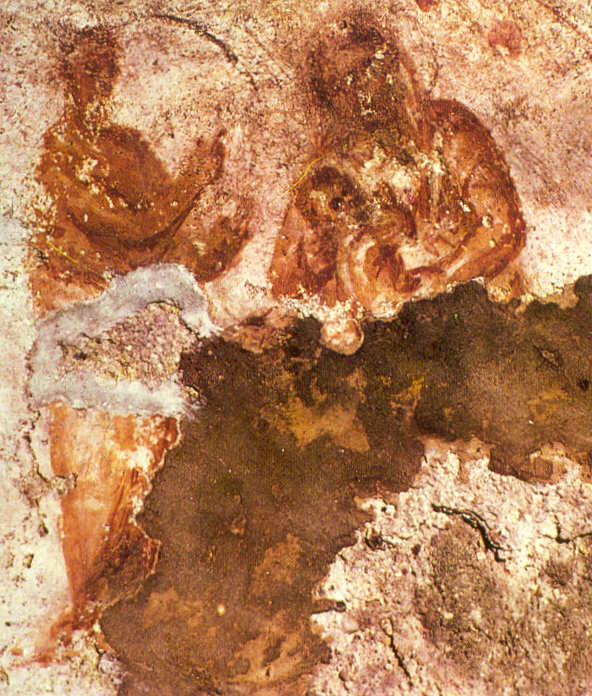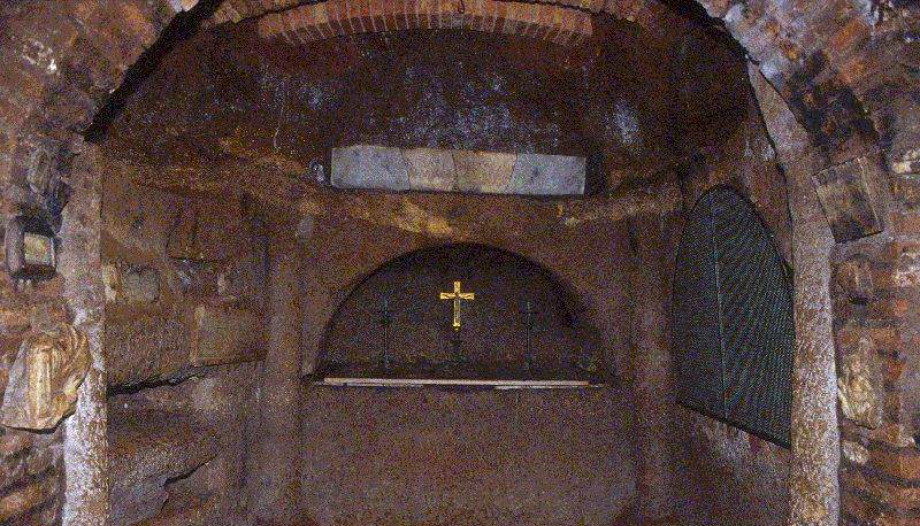On the occasion of the 18th centenary of the death of Pope Callixtus (218-222) the Day of the Catacombs has as its theme in its fifth edition "Callixtus and the invention of the catacombs". In fact, the first official cemetery of the Church of Rome, on the Via Appia Antica, which bears his name, and the Catacomb of Calepodium, on the Via Aurelia, where he was buried, are linked to the Pope. As stated in the press release issued by the Pontifical Commission for Sacred ArchaeologyThe event, which presents the initiative scheduled for Saturday, October 15, 2022, "aims to propose a series of itineraries through archaeological and artistic testimonies both to underline the centrality of the figure of Callixtus, and to take visitors through the stages that led to the birth and development of the subway cemeteries".
La Jornada gives us the opportunity to recall some historical and artistic notes about the Christian catacombsFrom the beginning, they were conceived as a space designed to welcome the faithful in a common resting place and to guarantee all members of the community, even the poorest, a dignified burial, an expression of equality and fraternity.
Origins of the catacombs
The catacombs were born in Rome between the end of the 2nd and the beginning of the 3rd century A.D., with the pontificate of Pope Zephyrus (199-217), who entrusted the deacon Callixtus, future pontiff, with the task of supervising the cemetery on the Appian Way, where the most important pontiffs of the 3rd century would be buried. The custom of burying the dead in subway spaces was already known to the Etruscans, Jews and Romans, but with Christianity, much more complex and extensive subway cemeteries were created to house the entire community in a single necropolis.
The ancient term to designate these monuments is "coemeterium", which derives from Greek and means "dormitory", underlining the fact that for Christians burial is only a temporary moment, awaiting the final resurrection. The term catacomb, extended to all Christian cemeteries, defined, in antiquity, only the complex of St. Sebastian on the Appian Way.
As for their characteristics, the catacombs are mostly excavated in tuffaceous or other easily removable but solid soil. That is why they are found mainly where there are tuffaceous soils, i.e. in the center, south and islands of Italy. Catacombs consist of stairways leading to ambulatories called, as in mines, galleries. On the walls of the galleries are arranged the "loculi", i.e. the burials of common Christians made lengthwise; these sepulchers are closed with marble slabs or bricks.
The burial niches represent the most humble and egalitarian sepulchral system to respect the sense of community that animated the early Christians. In the catacombs, however, there are also more complex tombs, such as the arcosoli, which involve the excavation of an arch over the tufa coffin, and the cubiculi, which are real burial chambers.
Data
Most of the catacombs are located in Rome, reaching a number of about sixty, while there are as many in Latium. In Italy, the catacombs develop especially in the south, where the consistency of the soil is more tenacious and, at the same time, more ductile to excavation. The northernmost catacomb is that of the island of Pianosa, while the southernmost subway cemeteries are found in North Africa and especially in Hadrumetum in Tunisia. Other catacombs are found in Tuscany (Chiusi), Umbria (near Todi), Abruzzo (Amiterno, Aquila), Campania (Naples), Apulia (Canosa), Basilicata (Venosa), Sicily (Palermo, Syracuse, Marsala and Agrigento), Sardinia (Cagliari, S. Antioco).
In the catacombs an extremely simple art developed from the end of the second century, partly narrative and partly symbolic. Paintings, mosaics, sarcophagus reliefs and minor art evoke stories from the Old and New Testament, as if to present to the new converts examples of salvation from the past. This is how Jonah is often represented rescued from the belly of the whale, where the prophet had remained for three days, evoking the resurrection of Christ. The young men of Babylon saved from the flames of the furnace, Susanna saved from the wiles of the elders, Noah escaping the flood, Daniel remaining unharmed in the lions' den are also represented.
The miracles of healing (the blind man, the paralytic, the hemorrhoid) and of resurrection (Lazarus, the son of the widow of Naim, the daughter of Jairus) are selected from the New Testament, but also other episodes, such as the conversation with the Samaritan woman at the well and the multiplication of the loaves. The art of the catacombs is also a symbolic art, in the sense that certain concepts that are difficult to express are represented with simplicity.
To signify Christ a fish is represented, to signify the peace of paradise a dove is represented, to express the firmness of faith an anchor is drawn. Some symbols, such as the cups, the loaves and the amphorae, allude to the funeral meals in honor of the dead, the so-called "refrigeria". Most of the symbols are related to eternal salvation, such as the dove, the palm, the peacock, the phoenix and the lamb.
The oldest image of the Virgin

Catacomb of St. Priscilla.
The oldest image of the Virgin Mary is preserved in the Roman catacombs, depicted in painting in the cemetery of Priscilla on the Via Salaria. The fresco, dating from the first half of the third century, depicts the Virgin and Child kneeling before a prophet (perhaps Balaam, perhaps Isaiah) who points to a star, alluding to messianic prophecy. One of the most represented images is that of the good shepherd, which, although it takes the scheme of pagan culture, immediately acquires a Christological meaning, inspired by the parable of the lost sheep. Thus, Christ is represented as a humble shepherd with a sheep on his shoulders, who watches over a small flock, sometimes consisting of only two sheep placed at his side.
Martyrs killed during the bloody persecutions ordered by the emperors Decius, Valerian and Diocletian were buried in the catacombs. A form of worship soon developed around the martyrs' tombs, with pilgrims leaving their graffiti and prayers on these exceptional tombs. Christians sought to place the graves of their dead as close as possible to the martyrs' tombs because it was believed that this mystical closeness would be established in heaven as well.
The opinion of the Fathers of the Church
Between the end of the 4th and the beginning of the 5th century, the Fathers of the Church describe the catacombs. St. Jerome first recounts that, as a student, he used to visit the tombs of the apostles and martyrs with his companions on Sundays: "We entered the tunnels, dug in the bowels of the earth... Rare lights from high above the ground softened the darkness a little... We walked slowly, one step after the other, completely enveloped in darkness".
In the second half of the fourth century, Pope Damasus set out in search of the tombs of the martyrs located in the various catacombs of Rome. After finding the tombs, he had them restored and had splendid panegyrics engraved in honor of those early champions of the faith.
In the 6th century, Popes Vigilius and John III also restored the catacombs after the incursions due to the Greco-Gothic war. Also later, between the 8th and 9th centuries, Popes Hadrian I and Leo III restored the sanctuaries of the martyrs of the Roman catacombs. After a long period of oblivion, in the 16th century, the rediscovery of these subway places offered precious proof of the authentic faith of the early Christians, later used by the Counter-Reformation movement. Finally, in the 19th century, Pope Pius IX created the Commission of Sacred Archaeology to preserve and study the sites of early Christianity. Also through initiatives such as the one meritoriously organized for next Saturday.








